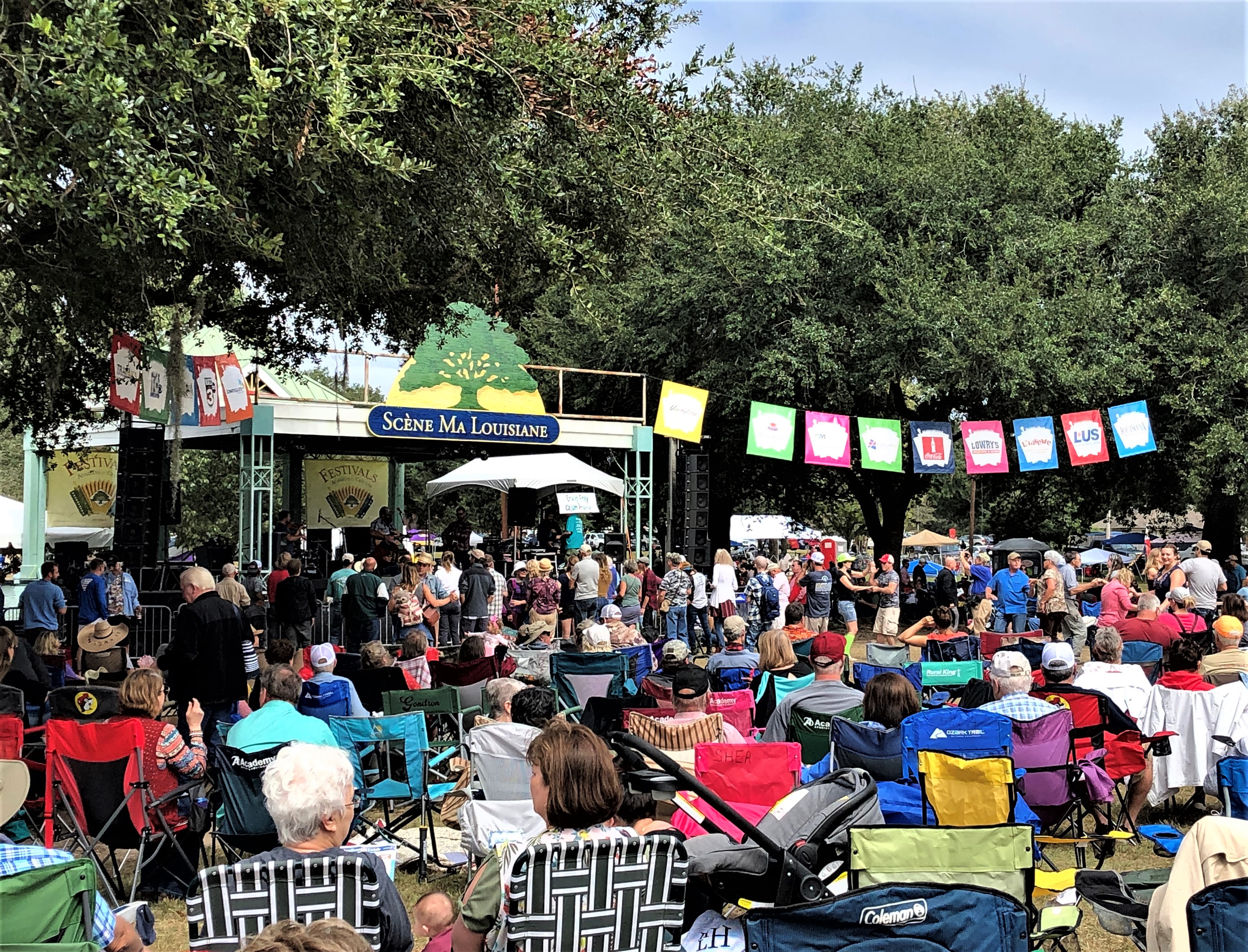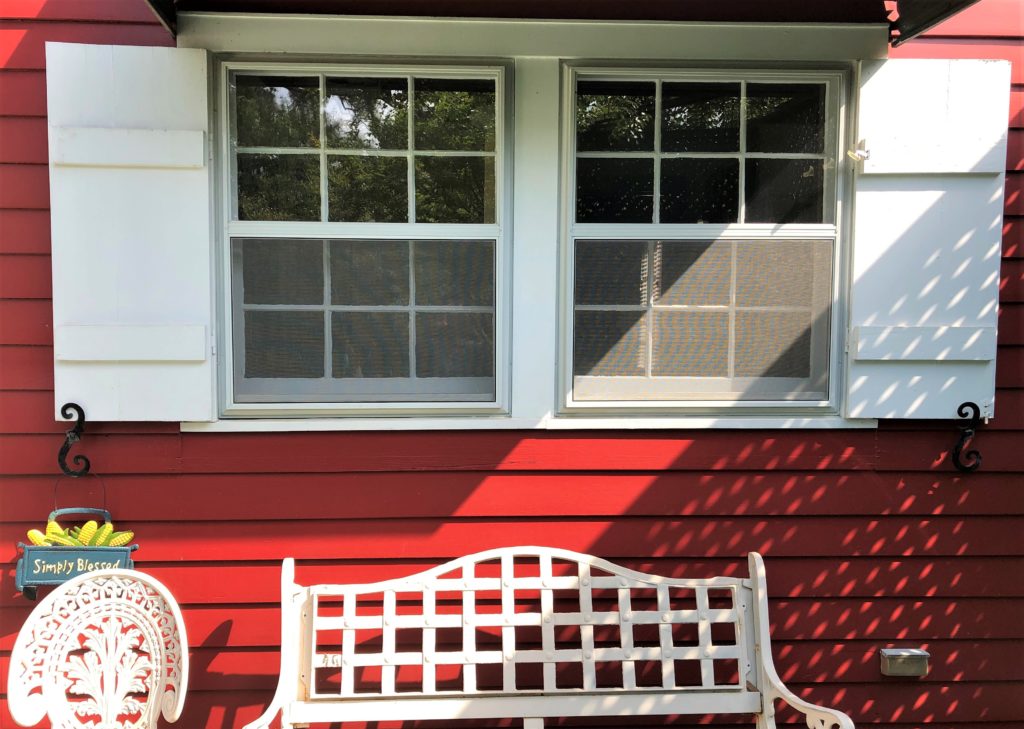The secret to the “simplest” rice ever, according to two top-rated Louisiana chefs: “Bake it covered in the oven,…and when it’s finished, let it sit on the stove top, with the lid on – DON’T TOUCH IT! – for five minutes to let the steaming complete.” This is high-valued insight since rice is so central to Louisiana cooking, and Chef Marcus Bankston and Chef Stan sang the same chorus in successive cooking demonstrations of jambalaya and barbeque shrimp at the annual Festivals Acadiens et Creoles this weekend in Lafayette, Louisiana.
Here in the heart of Cajun country, northwest of New Orleans and where the Acadian French and Creole subcultures go back more than 300 years, people grow up cooking using generous portions from farms and sea and playing music at home. Singing, dancing and entertaining family were homestyle de-stressors from poverty or slavery. The intermingling black and white cultures, affected by the same economic and social stew for more than a century, has blended food, music and lifestyle in a rich cultural gumbo fiercely preserved here. As a business woman traveler, I always ask the locals for what’s most authentic, and this annual festival has been on my list for months.
The genuine appreciation for – and respect of – such a diverse cultural environment is remarkable here through shared common values – friends, family, food and music. It’s expected in ordinary daily interactions and it is pervasive in the spirit of festivals that occur nearly every weekend in southern Louisiana, from church parking lots to sprawling public spaces. At this pinnacle of festivals, dozens of bands, restaurants, chefs and artists display their gifts that as far as I can tell must be grown from the soil. In an atmosphere wrapped in lilting and uplifting musical expression encompassing French ballads, accordion-based dance music, fiddle tunes, Cajun-inflected country and western, syncopated Zydeco and local “swamp pop,” kids and adults alike romp and dance in two-step swing. Or they grab a microphone to chime in on a tune passed through the family for generations.
Did I mention this three-day festival is free? Except of course the food, which comes audaciously inexpensive prices. I’m just sayin’, this is a generous place.
The first day I sat in on the 90-minute Corey Ledet jam. In the “Jam Ca!” tent (Jam That!) sponsored by the University of Louisiana at Lafayette – world renowned as a preservationist resource for Louisiana traditional music and culture – Ledet, a Zydeco star who later appeared onstage with his band, played his accordion with anyone who wanted to fiddle, strum or sing in the pick up group. Spontaneity and smiles were infectious – happy people signing happy music once emanating from hardship – slavery, deportation, poverty. You can see and hear some of the sounds here. Corey Ledet Jam
Some of the same musicians returned the next afternoon for Jeffrey Broussard, legendary leader of the Creole Cowboys, who sang with a constant toothpick in the right corner of his mouth. (He’s below in the neon shirt.) At one point there were five small accordions, four washboards, six fiddles, one string bass, one percussionist with spoons and small drums, two dulcimers and one mandolin strummed by a shy participant who sat in the back outside the players’ circle. Everyone got a turn at a solo or offering a melodic strain, picked up and built on by the others. Everyone was honored, no one had the stage more than the others, thanks to the “shared” approach of these jams, which happen around here all the time apparently. Here’s an excerpt. Jeffery Broussard Jam
To mingle with the professionals in the intimate atmosphere of a family reunion was “pinch me” time for a visitor like me. Families set up cabanas and stadium chairs and stayed the day, if not parts of all three. The landscape reminded me of a mini-version of Sunday at Grandma’s in Ohio back in the 1950s, where everyone brought a dish and most of us an instrument – and as families and friends – together we entertained ourselves for the afternoon.
This year is the 90th anniversary of “Jolie Blonde,” the 1929 Cajun waltz first recorded by the Breaux Brothers and recognized as the “Cajun national anthem” (the pretty blonde who left the singer and moved back to her family) because of its popularity among country singers and Cajun revival bands. That meant special attention to the contributions of women to Cajun and Creole music, female performers (Babineaux Sisters, Daiquiri Queens and more) and folklorists. Even representatives from Experience Acadie, the Canadian maritime province region where the forced Cajun migration began in 1758, were on hand with their travel brochures, French language children’s books and folklore bands. There was plenty of traditional, Cajun and Canadian French in the air, and while many try, you have to be an adept polyglot to navigate all three easily.
By the way, “barbeque shrimp” (often associated with New Orleans cooking) is not “barbecued” in the local vernacular and – insider’s tip – does not have “barbecue sauce.” That’s achieved through a light but aromatic sauce blending spices, Worcestershire sauce and beer. And if I thought I might get the exact ingredients and portions of the herb-spice mix that Chef Stan uses in his jambalaya (which has won jambalaya cookoffs through Louisiana), forget it – “I channel my grandmother,” he responded with a mischievous twinkle in his eye.
Southern Louisiana is worth a deep dive if you have the chance. There are subtleties the locals recognize (historically Cajuns were originally poor white farmers or fishermen, Creoles are both white and black), but those distinctions don’t get in the way of one of the most genuinely welcoming regions I’ve ever visited. They told me when I came here that it was the “happiest” place and one of the most accepting of people of all backgrounds, a sentiment I tagged with Chamber of Commerce branding. Yet, in daily practice they have proven that’s true. It’s especially remarkable at this time in our history when social division is running rampant – here social-cultural sensitivity comes with the people – and you’re expected to know better.
Experience this! FestivalsAcadiensetCreoles.com


